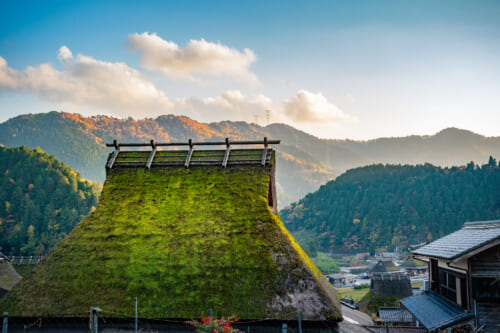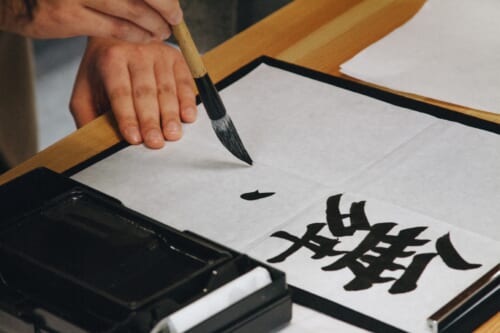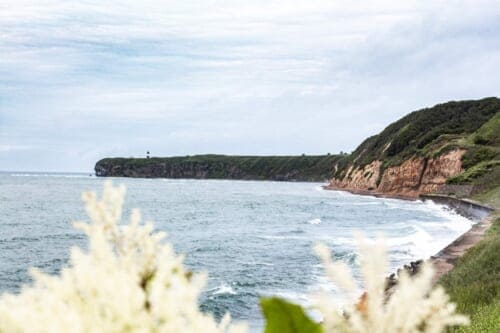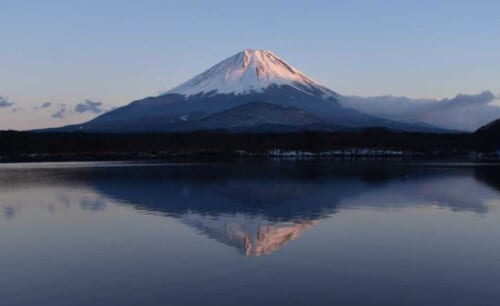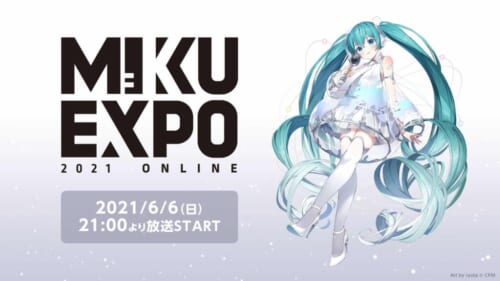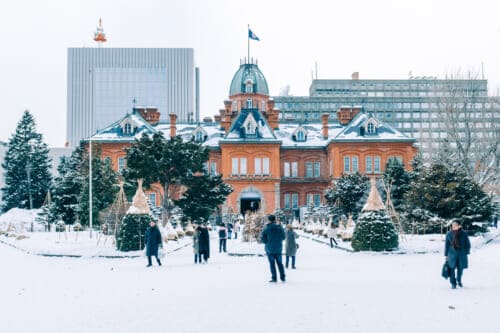While planning your exciting journey, it’s also wise to be prepared for the unexpected. Getting help in Japan is an essential topic for travelers, as medical issues, natural disasters, or even criminal incidents can occur without warning. Although you may never need this information, knowing how to access emergency services and support can be crucial. Being informed about getting help in Japan empowers you to respond calmly and effectively in unforeseen situations, ensuring greater safety and peace of mind during your stay.
Medical Assistance in Japan
Japan has one of the finest healthcare systems in the world, with the highest life expectancy rates and affordable, universal coverage for its residents. For an overseas visitor, it can be a dizzying experience for those unfamiliar with the multitude of facilities dedicated to particular medical specialties, its lack of foreign language support, and expensive out-of-pocket costs (without travelers insurance) to easily navigate on their own.
Depending on whether you need immediate emergency attention, have a concern you want checking out, or simply need to pick up some medication, there’s an array of hospitals, clinics, and pharmacies that one can visit to tend to your needs.
Finding A Medical Facility in Japan
First, you’ll have to figure out what medical facility you should visit. Unlike many western countries, the Japanese healthcare system has relatively few GPs and family doctors who treat common medical conditions. Rather, many doctors in Japan are specialists within a particular field of medicine.
For example, if you have cold symptoms such as fever, sore throat, cough, and runny nose, you’ll likely want to visit a specialist in internal medicine 内科. For bone fractures and joint pain, a visit will likely take you to a specialist in orthopedic surgery 整形外科. If you’re not sure what specialist you should visit, the JNTO “Guide for When You are Feeling Ill” guide has a list of diagnosis and treatment departments that is related to particular symptoms and areas of concern. The JNTO website also has a list of medical institutions that accept foreign visitors searchable by location, and lists medical services and supported foreign languages.
The Ministry of Health, Labour and Welfare also have a list of hospitals and clinics organized by prefecture, and available to overseas visitors and residents alike. Though some of the listed websites have English and other foreign language support, most will require the use of Google translate (or a Japanese-savvy friend) to help translate the content for you.
Emergency Hospitals, Hospitals, Clinics, Pharmacies, and Drugstores
Japan’s emergency hospitals or kyukyu byoin 救急病院 have round-the-clock staff 24 hours a day and are geared towards those who require urgent medical attention. Keep in mind that those without traveler insurance may not be able to receive medical attention and be referred to another hospital if so.
A general hospital 病院, byoin on the other hand, has hours of operation that vary from region to region. They can be open weekdays from 8:30 am to 5:00 pm, closed on Sundays, have varying hours for each medical specialist, or have specific time slots for walk-in patients. Patients with referrals normally get preferential treatment, so if you’re walking off the street, you may find yourself waiting in long lines before you see a doctor.
Clinics クリニック, kurinikku tend to be smaller than hospitals, though their sizes can vary, and can house one general practitioner to several specialist doctors in-house. They are also commonly set up for residents, meaning that overseas visitors may not be able to access medical attention at a Japanese clinic, so do some research beforehand if you’re planning on making a visit. Many clinics have a pharmacy attached to the clinic building itself, making it easy to visit a doctor and pick up a prescription all in one go.
If there isn’t a pharmacy 薬局, yakkyoku attached to the facility, most hospitals and clinics will have one in its close vicinity. Look for characters featuring this sign: 処方せん shohosen, 調剤薬局 chouzaiyakkyoku or 薬 kusuri, medicine for the nearest prescription pharmacy.
Drugstores ドラッグスト in Japan sell over-the-counter medications for common ailments like allergies, headaches, and colds. Unlike prescription pharmacies 薬, they usually don’t have a prescription counter and also offer items like snacks and magazines. Many stay open until 9:00 pm. Popular chains include Matsumoto Kiyoshi, Daikoku Drug, Cocokarafine, and Don Quijote.
How to Pay for Medical Services in Japan
How you pay, and how much, for any incurred medical fees will depend largely on whether you are covered by travel insurance or not. Some insurance coverages have cashless settlement options, so there’s no need for the hassle at the counter for payment. Check the full extent of your respective coverage details to confirm. If you don’t have any travelers insurance or have costs that are not fully covered by insurance, you can pay directly at the facility. Many large hospitals offer credit card payments, though some smaller hospitals and many clinics still operate on a cash-only basis, so have some on hand if you are visiting one of these facilities.
Travelers Insurance
Travel insurance is essential in Japan, as foreign health insurance is often not accepted and medical costs can be high if paid out of pocket. The right coverage ensures access to necessary care without delays or excessive expenses. Check whether your home insurance covers Japan, or consider local providers that offer short-term plans, partnered hospitals, and phone-based interpretation services.
Personal Medical Information Sheets
A personal Japanese-to-English medical information sheet is helpful if you encounter language barriers when speaking to a medical professional. The Japan National Tourist Organization (JNTO) has a basic downloadable form that you can fill out and includes your personal medical history, medication information, or any allergies you may have. The JNTO’s reference guide of symptoms and their severity is another useful reference sheet to carry with you, to help describe your symptoms and concerns to doctors more easily.
Calling An Ambulance: Dial #119
If you find yourself in need of an ambulance 救急車, kyukyusha, call the 119 emergency number. The 119 number can be made from mobile or payphone free of charge, and there is no additional cost for riding an ambulance. Keep in mind that you won’t be able to choose which medical facility you are taken to, and you’ll be responsible for any incurred medical fees at your destined hospital.
The 119 number works for either fire or medical emergencies, so you’ll be asked to state which during your call. To clarify that you’re calling for a medical emergency, say: “Kyukyusha onegai shimasu” (“Ambulance please”) or “medical emergency” in English. In case of fire, say “kaji desu” (“It’s a fire”). If you don’t have a phone or aren’t near a public payphone, ask someone nearby to call one for you, by asking “Kyūkyūsha o yonde kudasai.” (“Please call an ambulance.”)
During your call, you’ll also be required to provide the following information:
- Your location (address or landmark)
- Your name and age
- Your symptoms
- Your contact details on how to reach you
Speak slowly and clearly when calling emergency services; English-speaking operators may be available. If communication is difficult, ask someone nearby for help. Keep your passport and wallet ready, stay on the line, and follow instructions until help arrives.
For a more in-depth guide on calling an ambulance in Japan, the Fire and Disaster Management Agency (FDMA) features an ambulance pdf guide in English, Chinese, and Korean; and includes additional tips on dealing with common health-related concerns such as heat stroke. Several city websites also feature similar pdf guides in Italian, French, Thai, Traditional, and Simplified Chinese.
Reporting Crime in Japan
Japan has one of the lowest crime rates in the world and is touted to be one of the safest countries to travel in. That being said, there are a few instances where you may need to make a report to the police. If you’re in a car accident, witness a crime, or need to make an urgent report, here’s what you can do:
Report a Crime: Dial #110
To call the police during an urgent incident, a theft, or you witness a violent crime, dial the 110 police number to make a report. The 110 police number is free of charge, and some public phones are even equipped with a dedicated 110 number. The National Police Agency (NPA) have English speakers on staff, so they’re able to assist you in making a report to an officer in a three-way call.
You’ll need to provide the following information during your call:
- Your name, address, and contact details
- What was the incident or accident?
- When and where did it happen?
- Information about the criminal (if there is one), their features, direction they took
The NPA also advises that people on cell phones remain in place and stay on the line until an officer has reached you.
Report a Non-Urgent Crime: Dial #9110
To avoid tying up the 110 police number with non-urgent matters, the 9110 phone number was created to consult on non-urgent matters, such as delinquency, abuse, stalking, and fraudulent trading. Calling the 9110 number will get you connected to the police headquarters within the prefecture you are in, or be directed to the appropriate office where you can make your report.
The Koban: Japan’s Community Police Center
The presence of Japan’s small, community police stations called koban 交番 have long acted as a deterrent to street crime since the late 1880s and can be found near train stations, shopping malls, banks, and government buildings. Identified by their red lights and five-pointed gold star, they are most often used for getting directions, and handing in or seeking lost property, and are manned by no more than one or two officers at a time. They also serve as a quick response station to incidents and accidents that happen in the area. If you happen to lose a possession in the area, check the koban’s lost and found, as people often hand in found items here.
Most koban officers don’t speak English, though they’ll likely be able to contact someone who can assist you in English. The emergence of a “model koban” has slowly increased police officers who speak foreign languages in Tokyo, though their numbers are still low.
What You Should Do During a Natural Disaster in Japan
Japan is situated along a highly seismic and volcanic area known as the Pacific Ring of Fire, making Japan particularly vulnerable to natural disasters. Along with earthquakes, tsunamis, and volcanic eruptions, seasonal typhoons (heavy rainfall) can also lead to flooding and landslides. Almost all Japanese households have emergency kits, participate in regular emergency drills, and are familiar with the designated evacuation zones in their area. Here’s how an overseas visitors can get the help and information they need to navigate a natural disaster in Japan:
Getting English Disaster Information
One of the ways to stay ahead of any natural disaster is to stay informed on disaster statuses, updates, and advisories that can be found online, on TV, on the radio, or on your mobile phone. Almost all Japanese cities, towns, and villages have their own PA system which alerts their residents of incoming natural events, and of any precautions that need to be taken. Though all of Japan’s alert systems, mobile phone alerts, PA announcements, and news reports are all in Japanese, there are a few multilingual options available for foreign residents and travelers alike to help stay up to date with the latest news, advisories, and location of evacuation shelters.
Websites in English
The Japan Meteorological Agency issues early warnings for earthquakes, tsunamis, weather, and volcanic activity via TV, radio, and mobile alerts. Their multilingual website provides regional updates. Mobile alarms signal precautionary alerts—often giving enough time to reach safety. Check the Agency’s website for details when an alert sounds.
The JNTO (Japan National Tourism Organization) has a Japan Travel Safe page with general information and hotlines that will help in such emergencies. The site also has a set of downloadable communication cards, with translations of important phrases to use during a natural disaster.
NHK World broadcasts multilingual news through their website so you can stay up to date on natural disaster news, and listen for any precautionary action to be taken.
The Japan Times also has a dedicated disaster news page with a live blog feed that delivers fresh disaster-related information by the minute.
Apps for Natural Disasters
For English and other multilingual apps dedicated to disseminating disaster-related news, Yurekuru Call (iOS /Android) sends earthquake alarms with tips on disaster prevention to their users in English.
There are some other apps that push early disaster alerts in a variety of foreign languages.
171 Disaster Messaging System
The 171 Disaster Messaging System number is a phone service used specifically during disasters and helps you stay in touch with someone you may have become separated from. The service allows you to record and playback messages from its disaster emergency messaging board, and inputs any information you want, such as your name, location, and health status. Anyone with your phone number will be able to search for and check on your status. The service is only offered in Japanese, though the NTT website has an English PDF (as well as a Simplified Chinese and Korean) guide.
Evacuation Shelters and Refuge Areas
When you first arrive in Japan, take note of evacuation signs posted in your area. The appearance of these signs varies, but generally has a green pictogram of a person. They are often accompanied by other pictograms, such as waves for tsunamis, shaking buildings for earthquakes, or rising water for floods, and signify the type of emergency the evacuation shelter is suited for. They will point to the nearest refuge area and evacuation shelters 避難所, hinanjo and are commonly located within school gymnasiums, community centers, parks, and temple grounds.
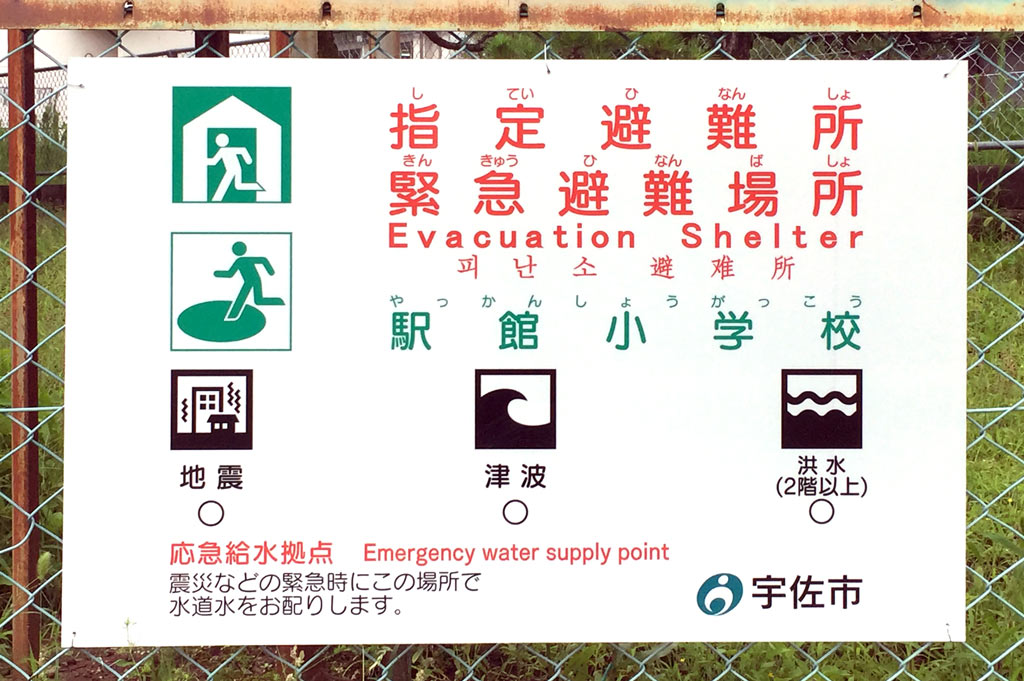
If you don’t know where the evacuation shelter is, find someone nearby and ask: “Hinanjo wa dokodesuka”? (“Where is the evacuation area”?) If you notice that people are all headed in one direction, it’s a fair bet that they are moving towards a refuge area, so if you’re not sure, follow the crowd until you see a sign or arrive at an evacuation shelter.
If you happen to be in the Tokyo metropolitan area, the Tokyo Metropolitan Disaster Prevention Map has a list of shelters and evacuation areas closest to you in English.
What to Do During an Earthquake and Tsunami
Japan accounts for over 20% of the world’s earthquakes and experiences an average of 1,500 tremors every year. Though most are small and won’t prompt an emergency response, if you do experience a larger earthquake, here’s what you should do:
If you’re indoors, stay away from windows and hide under a sturdy table or door frame. Avoid using elevators, even if tremors are over. If you’re outside, stay away from trees, vending machines, or anything that may fall on you. If you’re located close to the coastline, move away and up to higher ground, and pay special attention to any tsunami warnings and announcements on a PA system.
An earthquake, as well as volcanic eruptions and landslides, can trigger a series of powerful sea waves called a tsunami. If you’ve experienced an earthquake and hear a PA system sound an alarm or warning, seek higher ground immediately, move away from coastlines or rivers, and towards evacuation shelters. Even if you don’t understand the warnings in Japanese, take precautions and get yourself to safety. Again, if there are a group of people moving in one direction, it’s a safe bet that they are headed towards a refuge or evacuation shelter. Follow the crowd if you’re not sure, until you see an evacuation sign or reach the shelter itself.
What to Do During a Volcanic Eruption
Japan has the highest number of volcanoes in the world, with over 100 active volcanoes in total. Like other natural disasters, the risk level of an eruption is ranked from 1 to 5 – 5 being the most dangerous. If you’re near a volcanic eruption, protect your head of any falling debris as you move away, and cover your mouth with a towel or cloth to preventing inhaling volcanic ash or gas. There are often shelters along trails of known active volcanoes which would be the safest place to be in case of eruption.
What to Do During a Typhoon or Flooding
A typhoon is a powerful tropical storm that typically occurs from late summer to early autumn, bringing strong winds, heavy rain, and possible flooding. Although many typhoons in Japan cause limited damage, all should be taken seriously, as their paths can change quickly. During a typhoon, stay indoors in a sturdy building away from flood-prone areas, secure loose items, avoid outdoor activity, and follow updates from the Japan Meteorological Agency, evacuating if instructed.
Disaster Items to Carry with You
Unless you’re a resident of Japan, it’s unlikely you’ll have a disaster kit ready, much less be carrying it around with you while you’re traveling in Japan. That being said, there are a few important items you may want to keep on you in case of a sudden emergency:
- Your passport (in a Ziplock bag)
- Wallet with emergency cash
- Bottled Water
- Energy Bars and Snacks
- Personal Medical Information Sheet
- Prescription medication
- Charger for your mobile device
- Rain Poncho
For more information on what to do during a natural disaster, the Okinawa International Exchange & Human Resources has a pdf guide that gives not only general information about disasters, but also what to carry with you, tips on finding your evacuation shelter, what warnings to listen for, and a list of useful phrases while you’re in an evacuation shelter that’s translated in English, Simple and Traditional Chinese, and Korean.
Ministry of Land, Infrastructure, Transport, and Tourism has a Disaster Prevention Portal – a list of Japanese and English websites that offers information on natural disasters, how to get information, and other additional tips.
Getting Help from Your Embassy
There may be an occasion where you’ll want to reach out to your embassy for additional help and advice during any medical, criminal, or natural-related emergency. For example, if you require a lawyer, have a death during your trip, lose a passport, or seek compensation due to being a victim of a crime, your respective embassy will be able to provide you with additional resources and advice on how to navigate your situation.
Embassy Contact Info:
The Ministry of Foreign Affairs has a full list of embassies and consulates for foreign countries in Japan. You can also check the location of consulates by checking the respective embassy website.
| Embassy | Contact Info |
|---|---|
| Australia | 2-1-14 Mita, Minato-ku, Tokyo 108-8361 Hours: 9:00 am – 12:30 pm, 1:30 pm – 5:00 pm, Monday to Friday Phone: (03) 5232-4111 |
| Canada | 7-3-38 Akasaka, Minato-ku, Tokyo 107-8503, Japan Hours: 9:00 am – 4:00 pm, Monday to Friday Phone: (03) 5412-6200 |
| New Zealand | 20-40 Kamiyamacho, Shibuya City, Tokyo 150-0047, Japan Hours: 10:00 am – 4:00:pm, Monday to Friday Phone: (03) 3467-2271 |
| UK | 1 Ichiban-cho, Chiyoda-ku, Tokyo 102-8381, Japan Hours: 9:30 am – 4:30 pm, Monday to Friday Phone: (03) 5211-1100 |
| USA | 1-10-5 Akasaka, Minato-ku, Tokyo 107-8420 Hours: 8:30 am – 12:00 pm, 2:00 pm – 5:30 pm, Monday to Friday Phone: (03) 3224-5000 |
That concludes our guide to dealing with medical, criminal, or disaster-related emergencies in Japan. This guide is by no means comprehensive, but we hope that we’ve at least armed you with the confidence to navigate an emergency situation you may be faced with during your travels. Be diligent in your emergency planning and consult your embassy if you have a particular concern. By being prepared for the unexpected, you’ll be sure to have a wonderful and safe traveling experience that will meet all expectations.
Featured image by Suzi Kim
Original article from July 2020.


